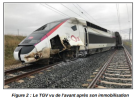For any German speakers, this report makes for fairly grim listening
Der Umgang mit Mitarbeitern, die auf Sicherheitsrisiken hinweisen | Video | Schon 2019 warnten mehrere anlagenverantwortliche Bahnmitarbeiter das Management der Deutsche Bahn vor Risiken im Streckennetz. Das geht aus einem siebenseitigen Brandbrief hervor, der dem ARD-Politikmagazin REPORT MAINZ...

www.ardmediathek.de
The gist is that the asset managers are responsible and personally liable for up to 400km of track each, but have nowhere near enough funding to perform even the minimum inspections and maintenance required. According to one such manager, they have "not just one, but one and a half feet in a jail cell". The author of an internal DB report stating that under those conditions personal liability for the asset managers was unreasonable/unacceptable (the German word is 'unzumutbar' which has a fairly specific legal meaning) was fired, as was one of the asset managers who authored a letter warning of serious problems.
The line at Garnisch was known to be in a very poor state by train drivers (they got access to WhatsApp messages between drivers just after the accident).
For me that sets of pretty loud alarm bells off in relation to what Network Rail is planning with their staffing cuts. Given the UK railway network isn't in the best state either (partly due to maintenance backlogs, partly just because it's so old), could we end up in a similar situation down the line if the planned cuts go ahead?


